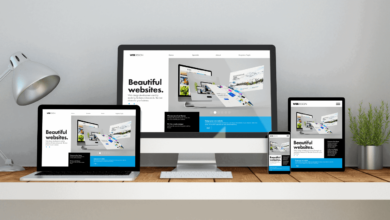Upper Funnel vs Lower Funnel: Where to Focus Your Efforts

The sales funnel is a dynamic roadmap guiding prospects from initial curiosity to loyal patronage, but not all stages demand equal attention. The debate of upper funnel vs lower funnel hinges on balancing the need to attract a broad audience with the urgency to convert ready-to-buy prospects. Upper funnel efforts focus on awareness and traffic, while lower funnel strategies drive conversions and revenue. Understanding where to allocate resources depends on business goals, market dynamics, and customer behavior. This article explores the distinct roles of each stage and offers strategic guidance to prioritize efforts effectively.
Defining the Roles of Upper and Lower Funnel
The upper funnel, encompassing the awareness stage, is about casting a wide net to generate visibility. It’s where prospects first encounter a brand through ads, content, or social media. A B2C retailer might use Instagram Reels to showcase a new product line, while a B2B software firm publishes whitepapers to attract IT leaders. The goal is to drive traffic and capture leads, filling the pipeline with potential buyers.
The lower funnel, covering the decision stage, targets prospects ready to act. These are leads who’ve engaged with content, requested demos, or added items to a cart. Here, the focus shifts to overcoming objections and sealing the deal. A B2C ecommerce brand might offer a limited-time discount to cart abandoners, while a B2B consultancy delivers a tailored proposal to close a contract. The upper funnel vs lower funnel distinction lies in scale versus precision—broad reach versus targeted conversions.
Upper Funnel: Building a Robust Pipeline
Upper funnel strategies are the foundation of a healthy sales funnel, creating the initial spark that fuels downstream conversions. Without a steady flow of prospects, the lower funnel starves. Content marketing is a cornerstone, with blogs, videos, or infographics addressing audience pain points. A fitness brand could publish “10 Tips for a Healthier Morning Routine,” subtly introducing its supplements.
Paid advertising amplifies reach. Search engine ads targeting keywords like “best CRM software” capture high-intent B2B prospects, while social media ads on platforms like LinkedIn or TikTok target niche demographics. Partnerships, such as influencer collaborations or co-branded webinars, expand exposure. A B2C skincare brand might partner with a beauty vlogger, while a B2B vendor co-hosts an industry event. Metrics like impressions, click-through rates (CTR), and lead volume guide upper funnel efforts, ensuring a vibrant pipeline.
Lower Funnel: Maximizing Conversion Efficiency
The lower funnel is where revenue is realized, making it critical for immediate ROI. Prospects here are high-intent, having engaged with the brand through content or inquiries. Personalized outreach is key—automation tools like HubSpot or Klaviyo deliver tailored emails based on behavior. A B2C retailer might send a cart abandonment email with a 10% off code, while a B2B firm offers a customized demo to a lead who viewed pricing.
Overcoming objections is paramount. Clear pricing, robust FAQs, or testimonials address hesitations. A SaaS provider could highlight its 99.9% uptime to reassure IT buyers. Conversion rate, cost-per-conversion, and time-to-close are critical metrics, revealing efficiency and effectiveness. Lower funnel strategies prioritize precision, ensuring resources convert ready buyers rather than chasing unqualified leads.
Assessing Business Goals to Prioritize Focus
The upper funnel vs lower funnel decision hinges on business objectives. Startups or brands entering new markets often prioritize upper funnel to build brand recognition and fill the pipeline. A new B2C apparel brand might invest heavily in social media ads to establish a presence, tracking impressions and lead volume to gauge success.
Mature businesses or those with established audiences may lean toward lower funnel to maximize revenue from existing leads. A B2B consultancy with a robust database might focus on personalized proposals to close high-value deals, monitoring conversion rates and deal size. Seasonal or promotional campaigns also shift priorities—a retailer during holiday season might emphasize lower funnel discounts to capitalize on purchase-ready shoppers. Aligning funnel focus with goals ensures resources drive the most relevant outcomes.
Balancing Resource Allocation for Impact
Resource constraints force businesses to prioritize, but a balanced approach often yields the best results. Neglecting the upper funnel risks a depleted pipeline, starving future conversions. Conversely, overemphasizing the upper funnel can delay revenue, as leads languish without lower funnel nurturing. A balanced strategy allocates resources based on funnel health and market dynamics.
For instance, a B2B SaaS company might allocate 60% of its budget to upper funnel activities like content and ads to sustain lead flow, reserving 40% for lower funnel demos and retargeting to close deals. Metrics guide this balance—high lead volume but low conversions might signal a need for lower funnel investment, while low traffic demands upper funnel focus. Regular funnel audits, using tools like Google Analytics or Salesforce, ensure resources align with performance.
Leveraging Technology for Funnel Efficiency
Technology enhances both upper and lower funnel efforts, enabling scale and precision. In the upper funnel, programmatic advertising platforms like The Trade Desk automate ad buying, targeting specific demographics in real time. A B2C retailer might use programmatic ads to reach eco-conscious shoppers with sustainable products. Marketing automation tools streamline lead capture, syncing form submissions to CRMs for nurturing.
In the lower funnel, CRM platforms like Zoho or Pipedrive track high-intent leads, prioritizing those with strong engagement scores. AI-driven predictive analytics forecast conversion likelihood, optimizing outreach. A B2B vendor could use AI to focus on leads who viewed contract terms. Chatbots provide instant support, answering checkout or demo questions. Integrated tech ensures both funnel stages operate efficiently, maximizing impact across the buyer journey.
Optimizing with Data-Driven Insights
Data is the linchpin of funnel prioritization. Upper funnel metrics—impressions, CTR, and cost-per-lead (CPL)—reveal campaign reach and efficiency. A low CTR on a LinkedIn ad might prompt creative tweaks, while high CPL could shift budget to organic content. Lower funnel metrics—conversion rate, cost-per-conversion, and cart abandonment rate—highlight closing effectiveness. A 50% abandonment rate might trigger checkout simplifications.
A/B testing refines strategies. In the upper funnel, test ad visuals or landing page headlines to boost clicks. In the lower funnel, test discount offers or email timing to lift conversions. Customer feedback, via surveys or reviews, adds context—upper funnel prospects might cite irrelevant ads, while lower funnel leads note pricing concerns. By leveraging data, businesses make informed decisions about where to focus efforts.
Adapting to Evolving Buyer Behaviors
Buyer preferences shape funnel priorities. The rise of social commerce, with purchases on platforms like Instagram, emphasizes upper funnel shoppable posts to drive instant awareness. A B2C brand might prioritize Instagram Stories to capture impulse buyers. Conversely, digital-first B2B buyers, researching independently, demand lower funnel self-service tools like virtual demos or ROI calculators.
Values-driven buying also influences focus. Upper funnel campaigns highlighting sustainability can attract eco-conscious prospects, while lower funnel trust signals—like transparent pricing—seal deals with values-aligned buyers. Personalization, powered by AI, spans both stages, tailoring ads or offers to individual preferences. Staying attuned to these trends ensures funnel strategies resonate with modern audiences.
Integrating Upper and Lower Funnel for Synergy
The upper funnel vs lower funnel debate isn’t about choosing one over the other—it’s about integration for maximum impact. A robust upper funnel feeds the lower funnel with qualified leads, while effective lower funnel conversions validate upper funnel investments. A hybrid approach, blending broad campaigns with targeted closings, creates synergy.
For example, a B2C retailer might run upper funnel TikTok ads to drive traffic, followed by lower funnel retargeting emails to convert cart abandoners. A B2B firm could use upper funnel webinars to attract leads, then lower funnel personalized proposals to close deals. Cross-functional alignment, with marketing and sales sharing data, ensures a seamless journey. Metrics like lead-to-customer conversion rate tie both stages together, guiding resource allocation.
Sustaining Growth Through Strategic Balance
Deciding where to focus—upper funnel vs lower funnel—requires a nuanced understanding of business needs and customer behavior. Upper funnel efforts build the pipeline, creating opportunities for future revenue, while lower funnel strategies drive immediate conversions, fueling cash flow. Data, technology, and trend awareness optimize both stages, ensuring efficiency and relevance. By integrating upper and lower funnel tactics, businesses create a cohesive journey that maximizes conversions and fosters loyalty. In a competitive market, striking this balance is not just a strategy—it’s the key to sustained growth and long-term success.





